April - May 2014
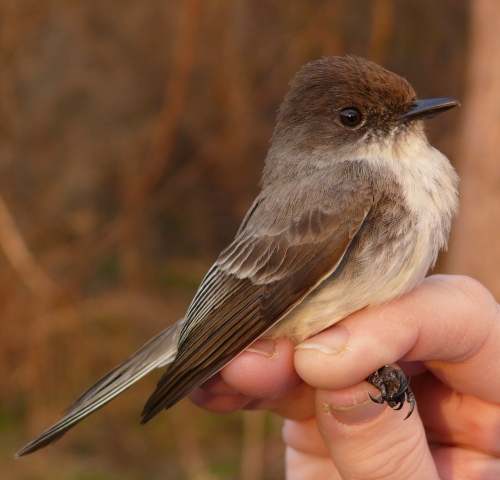
After crunching the numbers, we discovered this was one of our best spring seasons in years. Truth be told we knew it all along, but the numbers and pictures don't lie. We banded 2,699 birds across 100 species, the most we've banded in a single spring since 2007. In addition, we processed another 1,363 birds that were already banded.
Our top 10 species for the Spring were: Ruby-crowned Kinglet (294), Magnolia Warbler (215), Cedar Waxwing (148), Ruby-throated Hummingbird (139), American Goldfinch (126), Gray Catbird (123), Swainson's Thrush (98), Red-eyed Vireo (87), Tennessee Warbler (66) and Common Yellowthroat (65).
Pictured at left, captured in the early morning light-- always one of our first species to return in the Spring-- an adult (ASY) Eastern Phoebe that we banded on April 9th. This was one of four Eastern Phoebes that we banded this Spring.
Pictorial Highlights included this 'photo shoot' on April 19th, when we were lucky enough to have three Red-winged Blackbirds in the hand at the same time. Pictured below from Left to right: a second-year male, an after-second-year male, and an after-second-year female. Notice the glossy dark black body and wing feathers of the adult male as well as the bright, clearly defined red and yellow epaulet ("shoulder"). The young male (second-year, hatched last summer) has brown-edged feathers and the epaulet is dull and indistinct. See below for close-ups of both males.
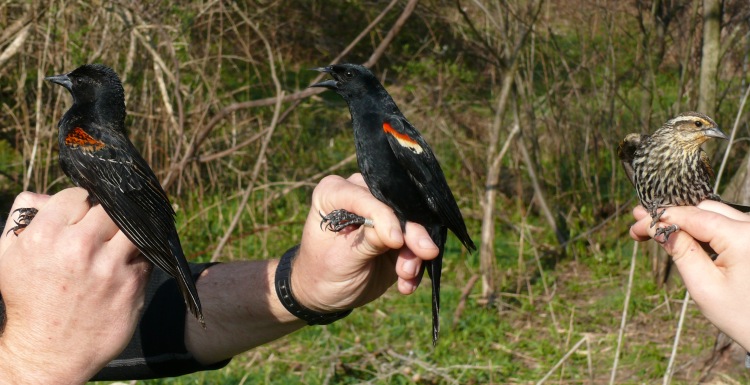
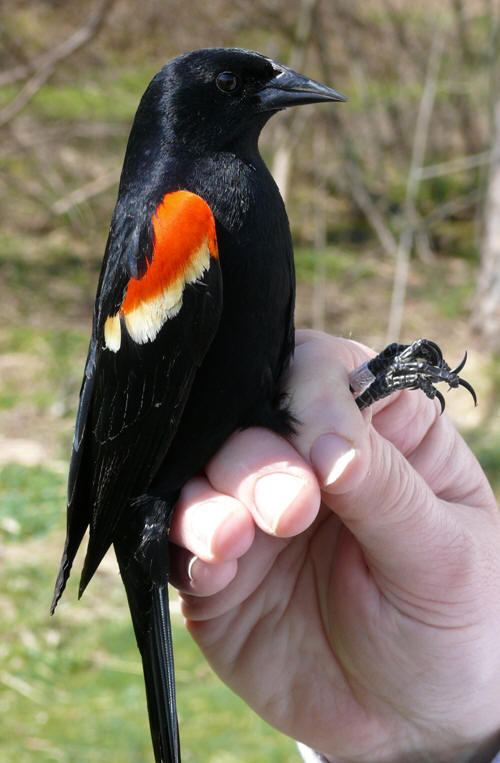
The handsome adult (ASY) male.
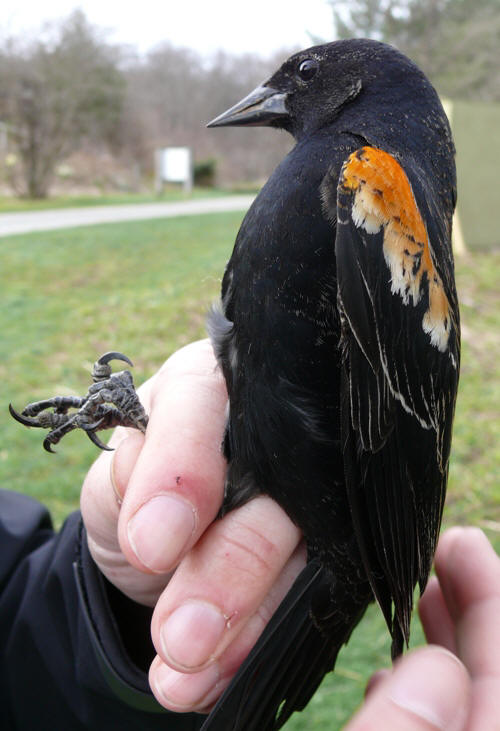
The slightly less-handsome, but still impressive second-year male. Note the light brown/buffy tipping on the feathers of the wing and body and the pale color of the epaulet.
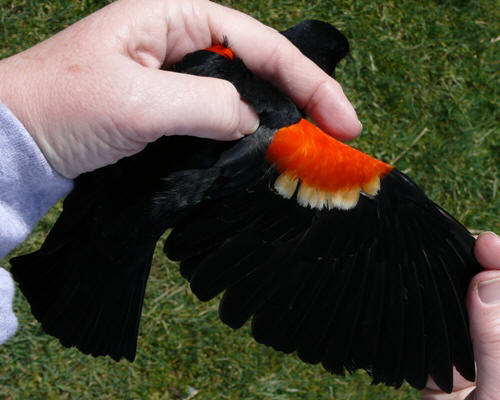
Bright red epaulet of the adult male.
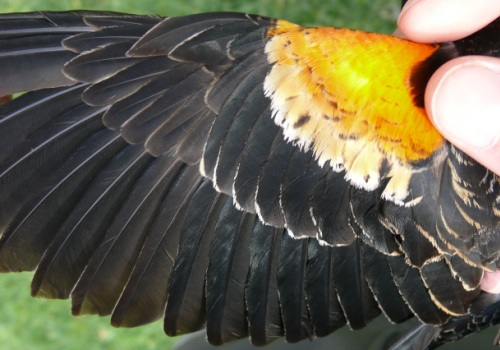
Pale wing of the second-year male.
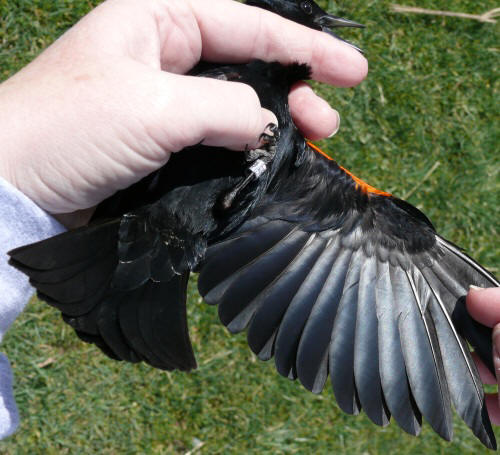
Underwing photo of the adult Red-winged Blackbird . Note that all of the feathers, including the underwing coverts are of high quality, glossy and dark black.
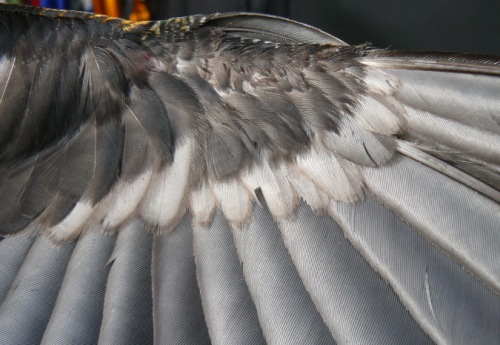
Underwing photo of the second-year Red-winged Blackbird. Note the poor quality of the feathers, particularly the coverts. This bird has actually replaced one of its coverts- the third covert from the wing edge is darker and less worn than the adjacent juvenal feathers. Differences such as this, where a molt limit is observed within a feather tract can be helpful in aging all Blackbirds.
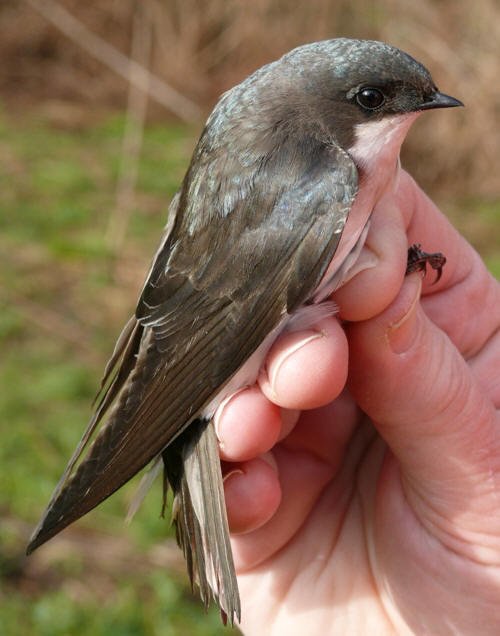
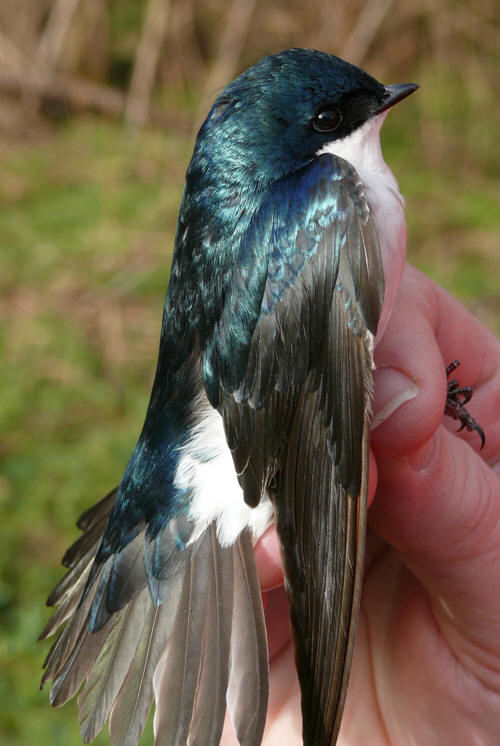
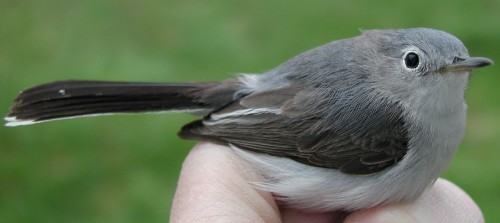
Two other nice in-hand comparisons we encountered this Spring include these two Tree Swallows (female on top, male below)...
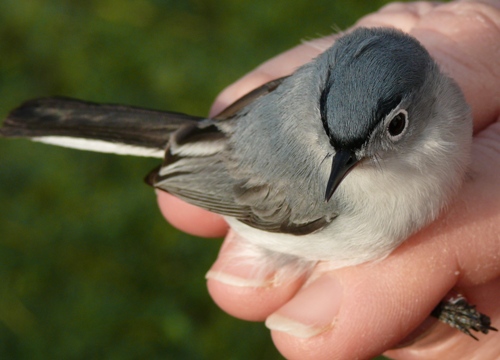
and this pair of Blue-gray Gnatcatchers, female above (banded April 14th) and the male, banded April 12th.
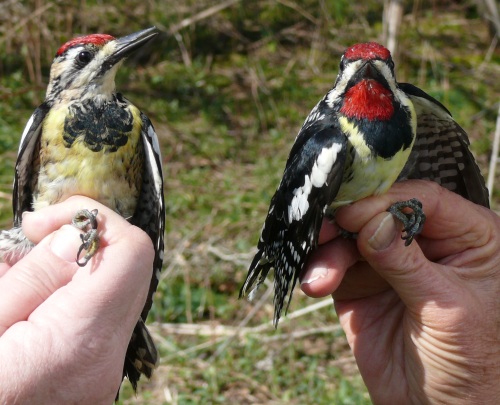
Although this pair was not the most cooperative in terms of posing for a photograph, they still offer us a good comparison of the male and female Yellow-bellied Sapsucker. Note the red on the throat of the male (right) which sets him apart. Banded on April 12th, these were the only two Sapsuckers we encountered this Spring; both were second-year birds (hatched last Summer)
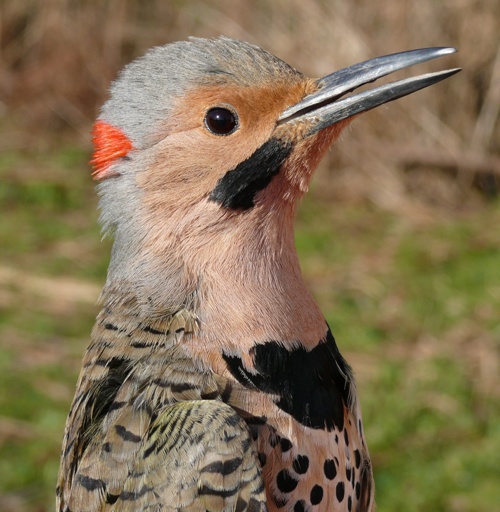
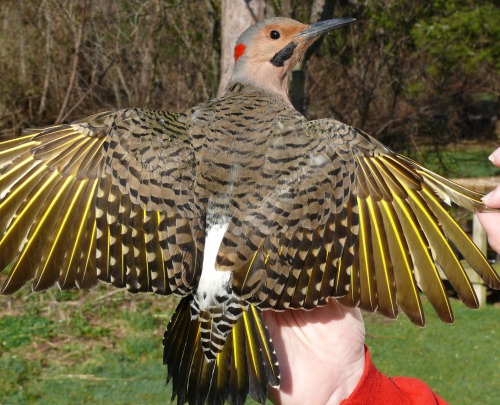
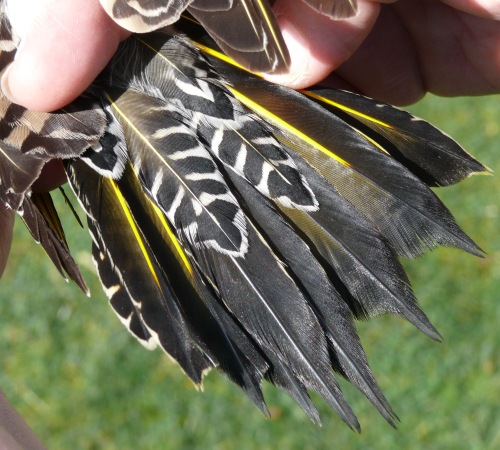
Another Woodpecker caught on April 12th was this handsome adult male Northern Flicker. Once again, the sex is determined by additional color on the head-- this time in the form of the black malar streak ("mustache") on the side of the face (both male and female Flickers have the red at the nape of the head).
This individual was one of ten Northern Flickers that we banded this Spring.
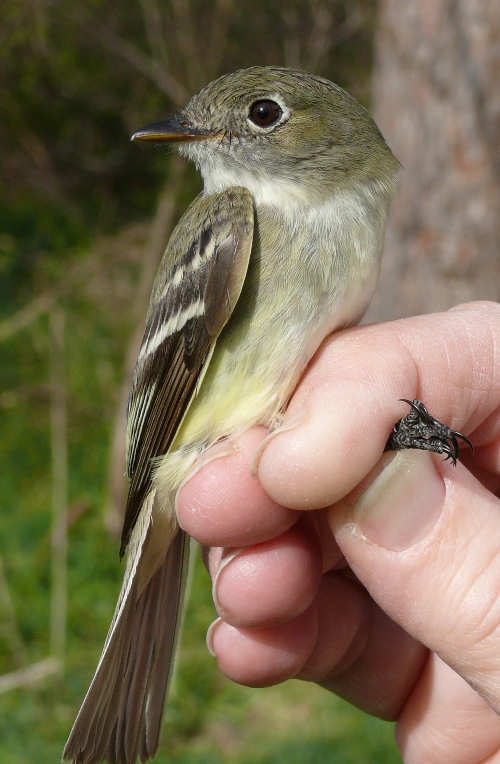
Representing the Flycatchers in our Spring Pictorial highlights are this diminutive Least Flycatcher (banded on April 25th)
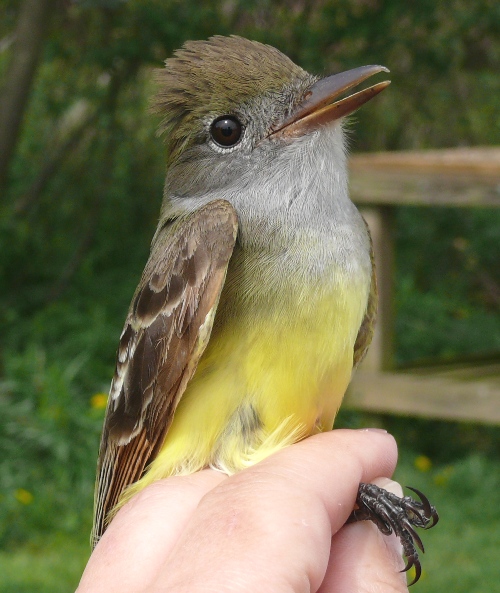
And the much larger Great-crested Flycatcher. On average we band 11 Least Flycatchers per spring, whereas we band on average less than one Great-crested per year.
Great-crested Flycatchers hunt high in the forest canopy and are more often heard than seen. The only Eastern flycatcher to nest in cavities, the Great-crested often lines its nest with snake skins and trash such as cellophane and string.
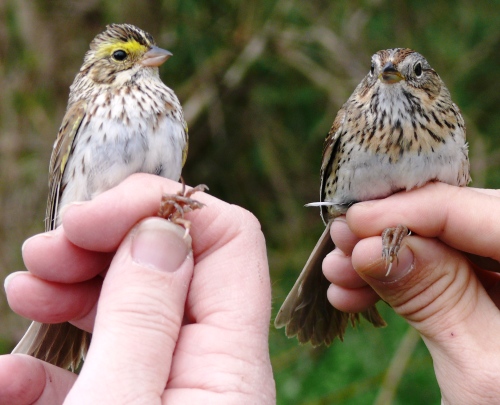
Sparrows in our photo lineup this Spring include three less commonly banded at Powdermill—the Savannah Sparrow (left) and a Lincolns Sparrow, both banded May 3rd...
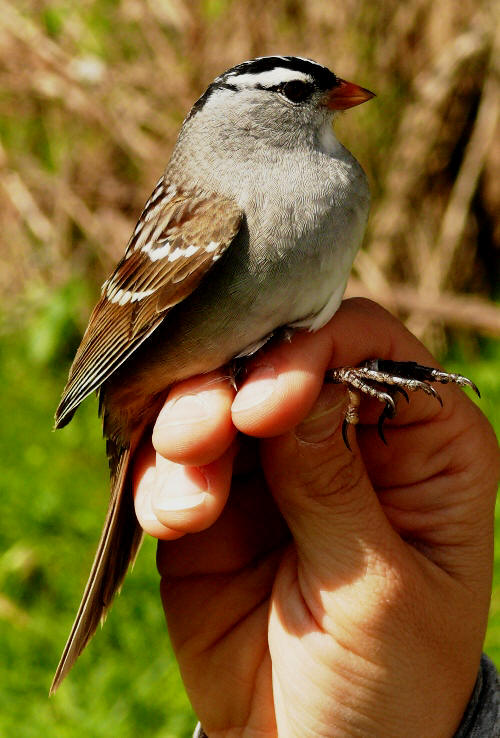
And this handsome adult (ASY) White-crowned Sparrow banded on May 6th. Both the Savannah and the White-crowned Sparrows are rarely banded in the spring (<1 per year) while we band an average of 11 Lincolns Sparrows each Spring.
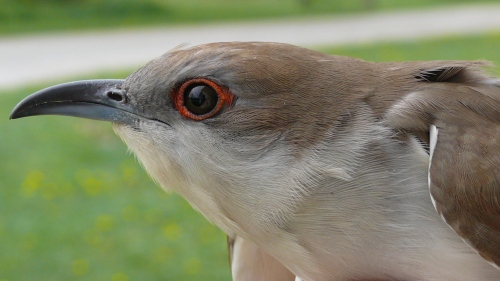
With their unique in-the-hand vocalizations and almost tropical appearance, Cuckoos are always a fun find in the nets. We were lucky enough to band four Black-billed Cuckoos this Spring, all of them in mid-May— the adult pictured here was banded on May 10th, another on May 17th and two banded on the 18th.
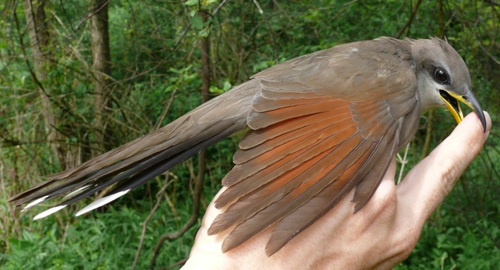
Although historically more common in Pennsylvania than the Black-billed Cuckoo (Second Atlas of Breeding Birds in Pennsylvania), the Yellow-billed Cuckoos are a less common capture for us, and we had to wait until the very end of the season to find this one in our nets (May 28th). According to the Breeding Bird Atlas, the Yellow-billed prefers open woodland over dense mature forest and is more common in suburban areas.
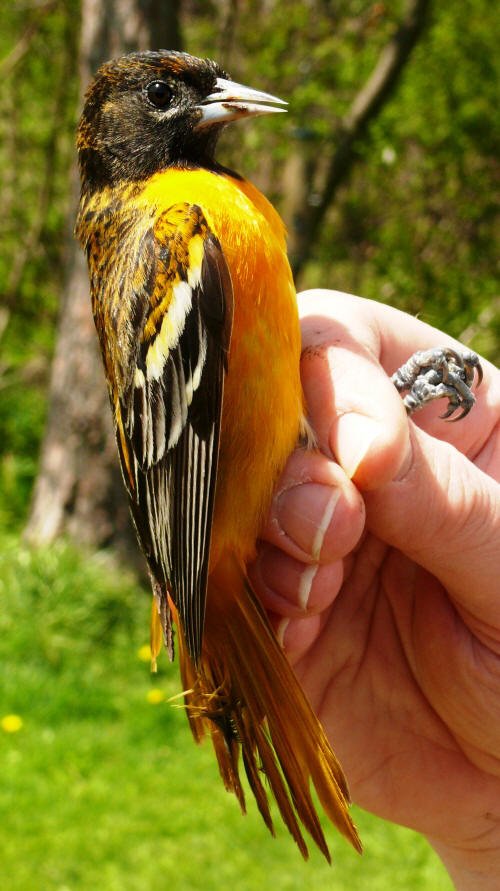
We banded four Orioles this Spring—three Baltimore Orioles (all Second-year birds born this past summer; one female and two males like the one pictured at left, banded on May 6th).
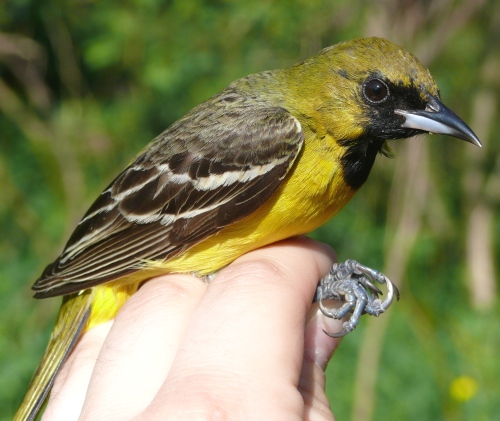
This Second-year male Orchard Oriole, banded May 14th was the only one of that species we saw this season.
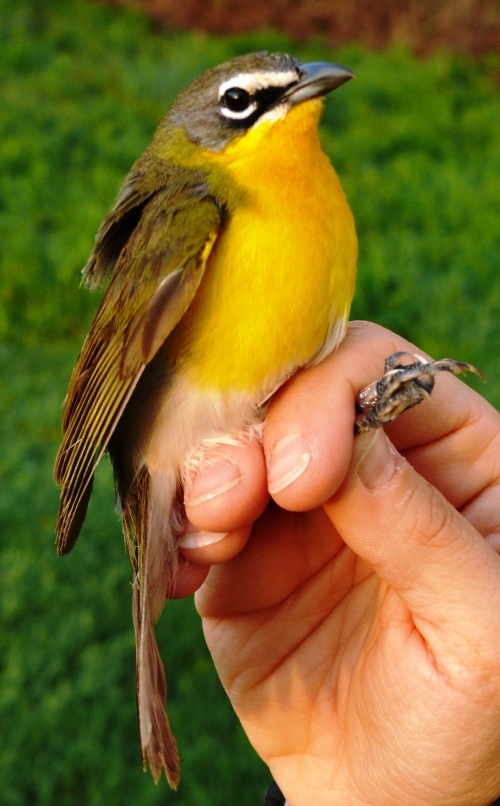
Another uncommon capture for us is the Yellow-breasted Chat, so we couldn’t help snapping a photo of this handsome second-year male after he was banded on May 8th.

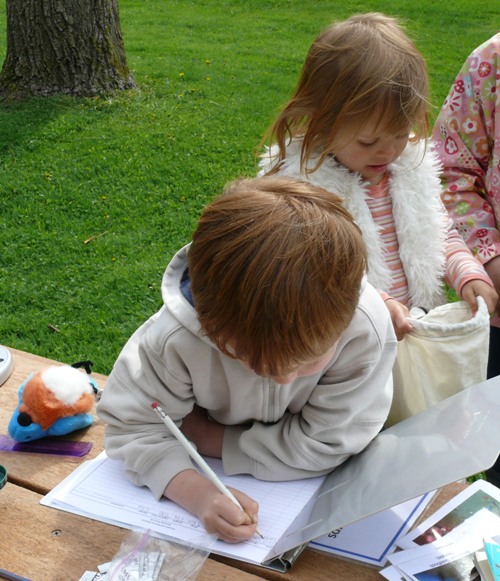
Photo highlights from our “human” encounters this Spring include our Pledge-to-Fledge Day on April 26th. Each spring we join Global Birding Initiatives efforts to "fledge" first-time birders and young bird enthusiasts. Our visitors are able to see birds and the science behind what we do up close and in person in the lab and afterwards they are encouraged to try their hand at extracting and banding our (stuffed)colorful birds, as seen in the photos at the left.
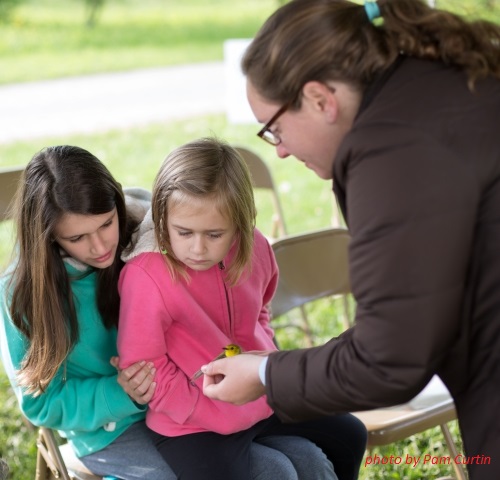
We also participated in Powdermill’s annual Reserve-wide Public Day on May 17th when visitors of all ages have a chance to tour the banding lab and enjoy nature through a variety of planned activities throughout the day.
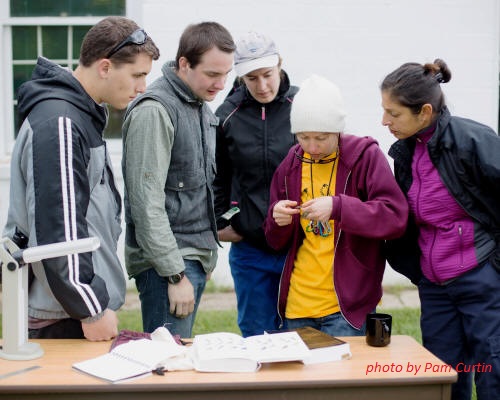
We held two Bander Training Workshops in May—an advanced workshop from May 14-18 and a beginner workshop the following week. Pictured at left, four members of the advanced workshop with Molly McDermott (former PARC banding coordinator, second from right).
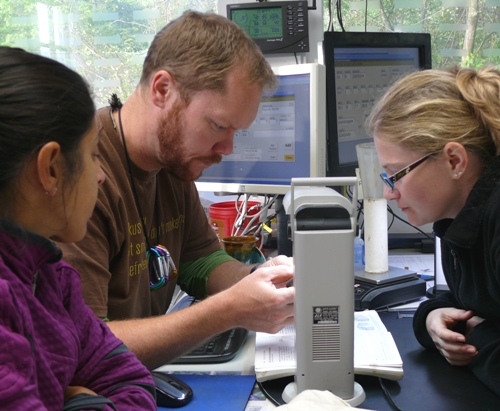
Participants are provided with individual training on net extractions, aging birds using molt limits and the use of diagnostic materials such as the Identification Guide to North American Birds by Peter Pyle.
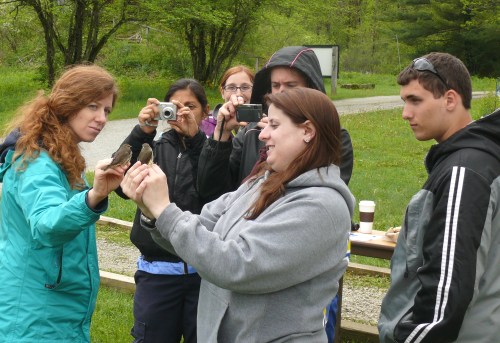
And of course the trainees like to take bird pictures as much as we do!
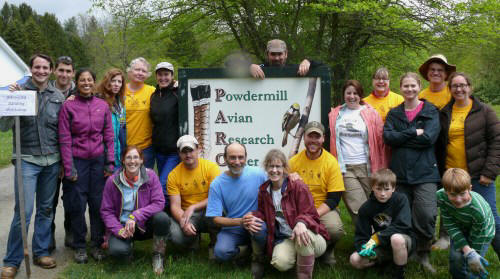
The eight members of the Advanced Workshop pictured with the PARC staff, along with volunteers Jim Bernat, Debbie Ball, Gigi Gerben, Benton Winfrey and Henry Winfrey. NABC trainer Annie Crary (far right, standing), a former PARC staff member, returned to Powdermill to help with the Workshop.
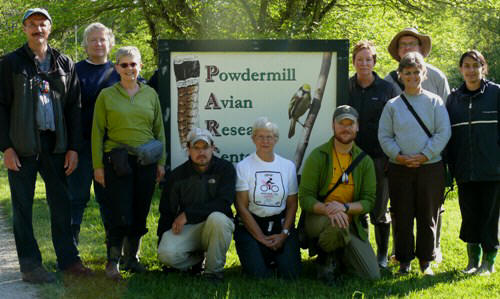
The five members of the Beginner Workshop along with the Banding lab staff. Many thanks to volunteer Tim Kita (far left) who volunteered with us throughout the workshop.
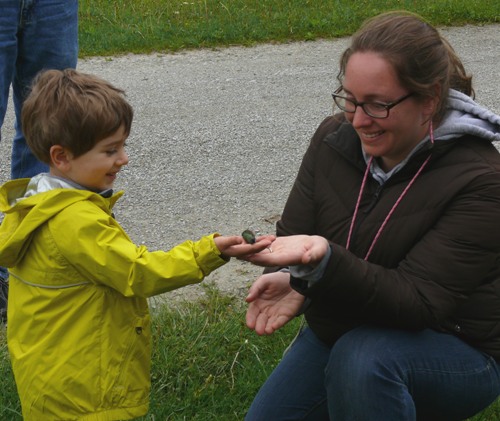
Hands down, our favorite 'people' pictures from the Fall were these shots of Annie's son, Tommy releasing a Ruby-throated Humingbird for the first time...
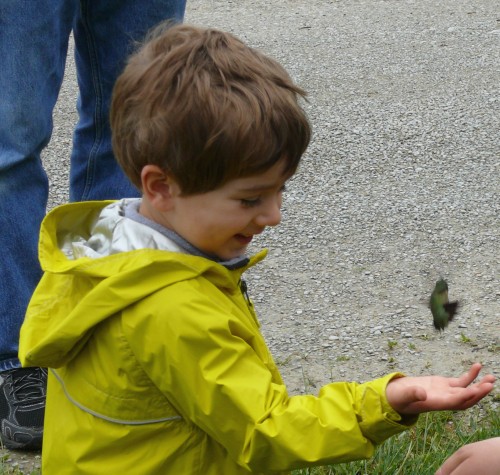
...PRICELESS!!!
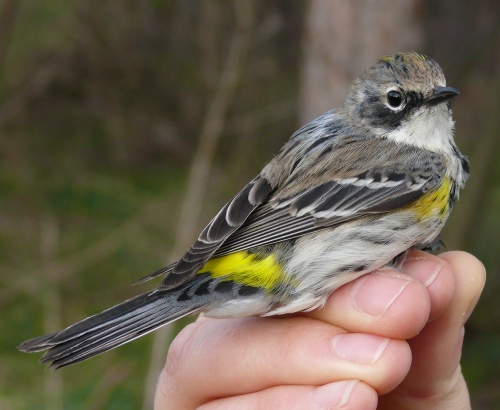
To finish out the Avian Spring Pictorial highlights, here are a few colorful warblers we just couldn’t help photographing (in order of appearance):
Yellow-Rumped (Myrtle) Warbler (second-year male), banded April 18th.
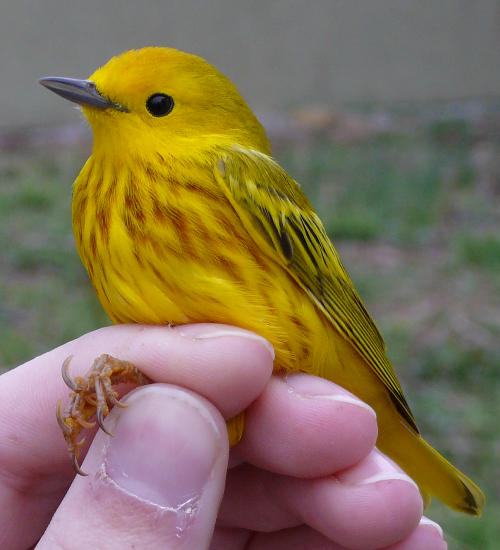
An after-second-year male Yellow Warbler from April 22nd.
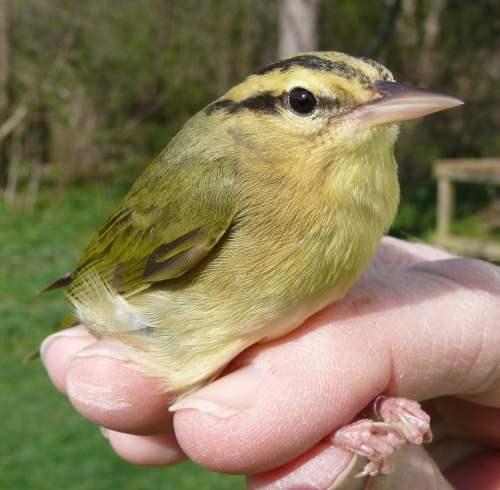
An adult Worm-eating Warbler from April 25th.
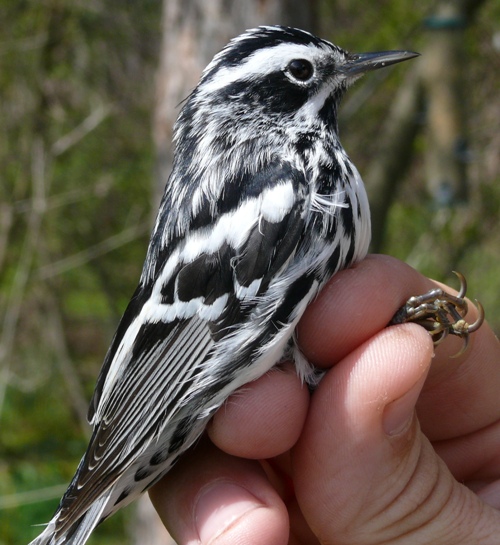
From April 26th, this handsome Black-and-white Warbler (ASY male).
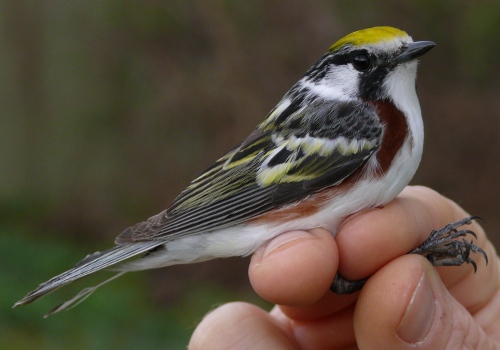
The start of May brought us Chestnut-sided Warblers; this Adult male was banded on May 1st.
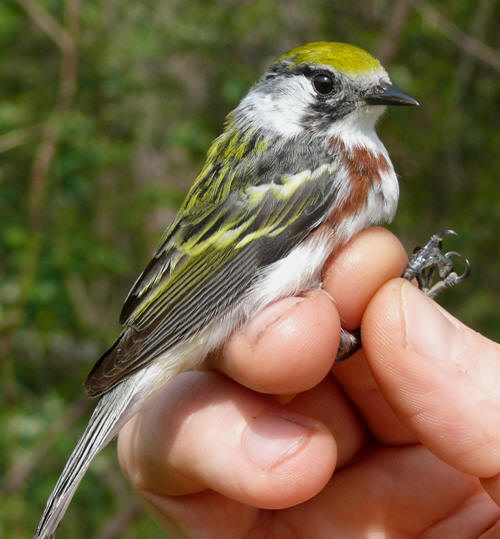
His female counterpart (also an adult) was caught a week and a half later, on May 11th
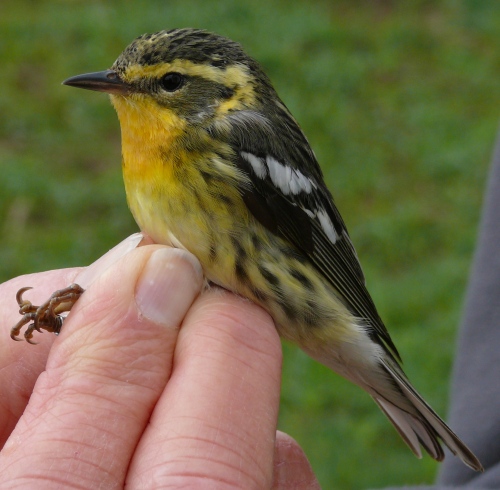
An ASY female Blackburnian Warbler from May 1st.
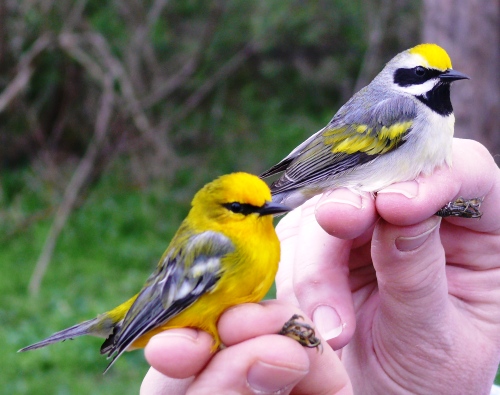
Always a nice surprise in the nets (since we don't band many of either species), this capture on May 3rd was double the fun.
On the left is an adult male Blue-winged Warbler; the bird on the right is a second-year male Golden-winged Warbler.
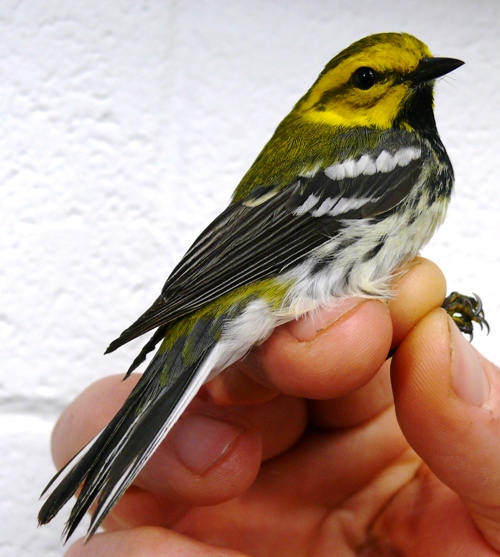
A second-year male Black-throated Green Warbler that we banded on May 8th.
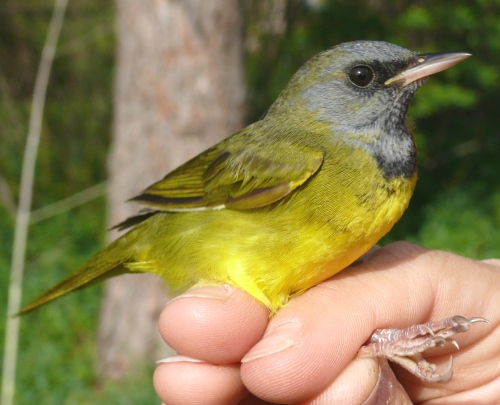
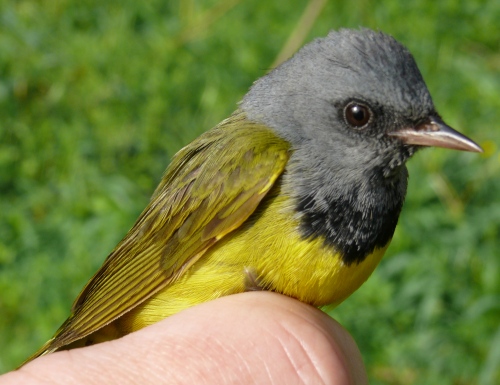
We captured 17 Mourning Warblers this Spring. Pictured at left are two of the males that we banded. The top photo is of a second-year male (hatched last Summer) and the bottom is an after-second-year male. Both birds were banded on May 8th.

We banded this handsome second-year male Bay-Breasted Warbler on May 9th.
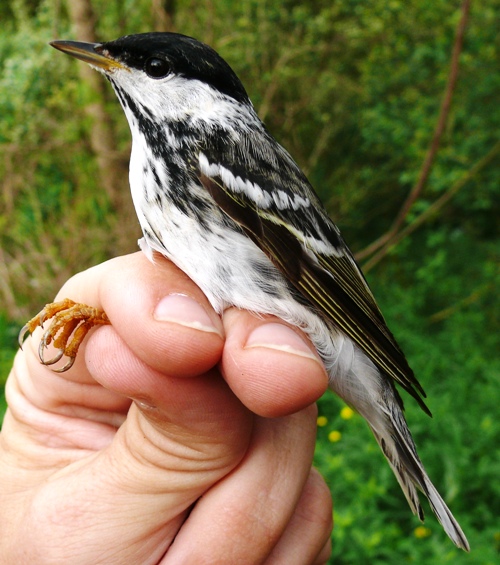
And the last (but certainly not least!) warbler in the Spring lineup-- a second-year male Blackpoll Warbler.
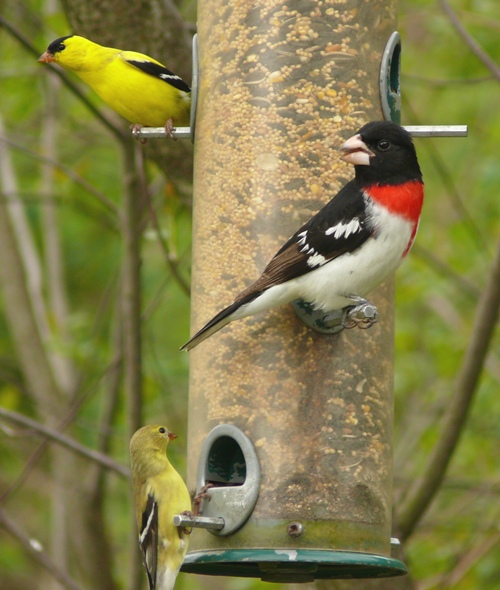
Of course not only the warblers are showing off their glorious Spring colors…
Since it is often difficult to get a good picture of a Rose-breasted Grosbeak without getting a ‘gros’ bite (gros being literally the French work for ‘big’) , we include this colorful perched photo as our finch tribute… ASY male Rose-breasted Grosbeak and male and female American Goldfinches.

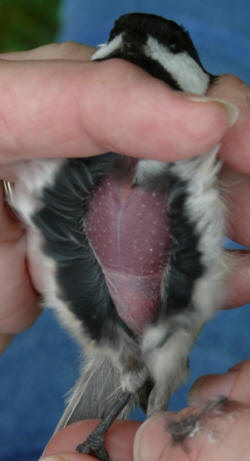
In mid-May we joined the nation in a different kind of tribute-- to Mothers. This female Black-capped Chickadee was banded on Mother’s Day weekend.
She had a "brood patch" and is "gravid". The first means that she's lost her breast feathers and the area is more vascularized to better incubate her eggs. The second term means that she has a developing egg visible in her lower abdomen. She was soon to be a happy mother of 1 to 13 if she wasn't already.
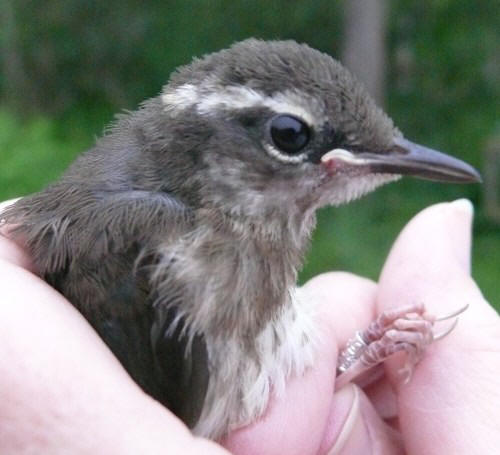
And finally, we closed the Spring on May 30th with the first of our “Local” fledglings—this adorable grumpy-looking Louisiana Waterthrush.
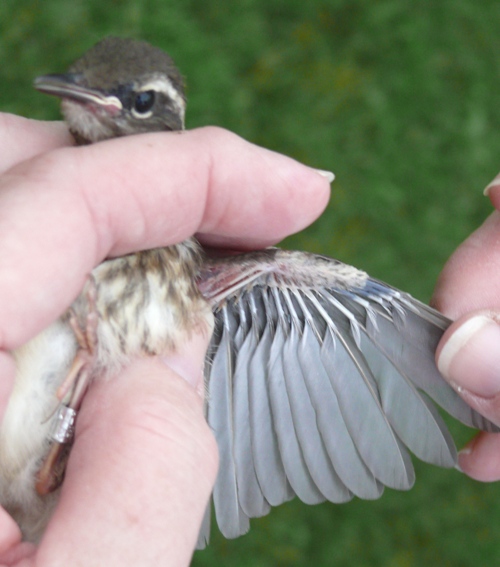
As yet incapable of long flights since its feathers are still growing out from the sheaths, this young warbler qualifies for the official age category of “local.”

We look forward to a summer with many more fledglings as Powdermill’s newly- arrived breeding pairs continue the Circle of Life.
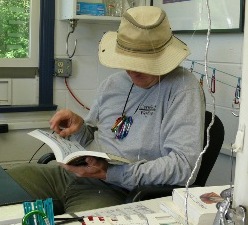
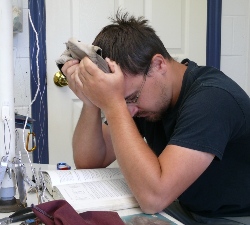
Many thanks to our two Spring Seasonal techs, Harley Winfrey (left) and Jason Gleditsch, seen here perusing the lab references between net checks—we couldn’t have done it without you!
